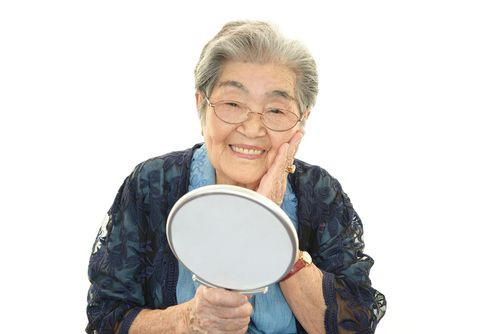Bleach Solution May Prevent Skin Aging: Could New Beauty Treatment Be Found On Your Cleaning Shelf?

Soon one of the most common household cleaning chemicals may become elevated to a beauty treatment. A diluted bleach solution, researchers at the Stanford University School of Medicine found, can stop cellular processes that damage and age skin. So far, they have only tested this process on mice, but the researchers hope to study the effects of bleach solutions on humans in an effort to find new therapies for damaged skin caused by radiation therapy, excess sun exposure, and aging. The study appears online in the Journal of Clinical Investigation.
Inflammatory Response to Skin Damage
When skin is damaged, immune cells rush to the site of the injury to protect against infection and many skin disorders, including eczema and radiation dermatitis, have an inflammatory component. If it escalates, inflammation itself can be harmful. For decades, doctors have used bleach baths, which greatly dilute the household chemical (sodium hypochlorite), to treat moderate to severe eczema in humans. Though they work quite well, scientists have never understood why. Thomas Leung, MD, PhD, of the Stanford School of Medicine, wondered if maybe these bleach solutions could somehow block an inflammatory response.
Specifically, Leung wondered if there could be a link between the effect of the bleach solution and NF-kB's role in skin. When activated by signaling molecules, NF-kB (nuclear factor kappa-light-chain-enhancer of activated B cells) enters the cell's nucleus and binds to DNA to control gene expression. When inactive, it remains hidden inside the cytoplasm, away from the DNA. To understand the whys and wherefores on a cellular level, Leung and his team exposed human skin cells to 0.005 percent bleach for one hour before treating them with a signaling molecule that normally activates NF-kB. They discovered that exposure to the solution blocked the expression of two genes known to be regulated by NF-kB.
"We found that the bleach solution oxidizes and inhibits an activator necessary for NF-kB to enter the nucleus, essentially blocking NF-kB's effect," Leung stated in a press release. The team also discovered that this effect was reversible. One day after the treatment, NF-kB's ability to activate expression of the target genes was restored.
Next, Leung and his colleagues tested the effects of daily, 30-minute baths on laboratory mice who had radiation dermatitis — a sunburn-like skin reaction caused by radiation therapy — a common cancer treatment. They found that the animals bathed in the bleach solution experienced less severe skin damage and better healing and hair regrowth than animals bathed in plain water. Next, they tested their solution on the elderly: old lab mice.
"We found that if we blocked NF-kB activity in elderly laboratory mice by bathing them in the bleach solution, the animals' skin began to look younger,” Leung said in the press release. “It went from old and fragile to thicker, with increased cell proliferation."
Soon after the diluted bleach baths were stopped, though, the effect diminished. Regular exposure, the team hypothesized, must be necessary to maintain skin thickness and health. The researchers are now considering clinical trials in humans while looking at other diseases that might be treated in this manner. "It's possible that ... it could also aid in healing wounds like diabetic ulcers," Leung said in the press release. "This is exciting because there are so few side effects to dilute bleach. It could be easy, safe, and inexpensive." Of course, the final form of such treatments might be quite different than how it is tested in a lab. In other words, bleach baths are not something to be tried out at home.
Source: Leung T, Kim S, Knox S, et al. Topical hypochlorite ameliorates NF-κ B–mediated skin diseases in mice. Journal of Clinical Investigation. 2013.



























